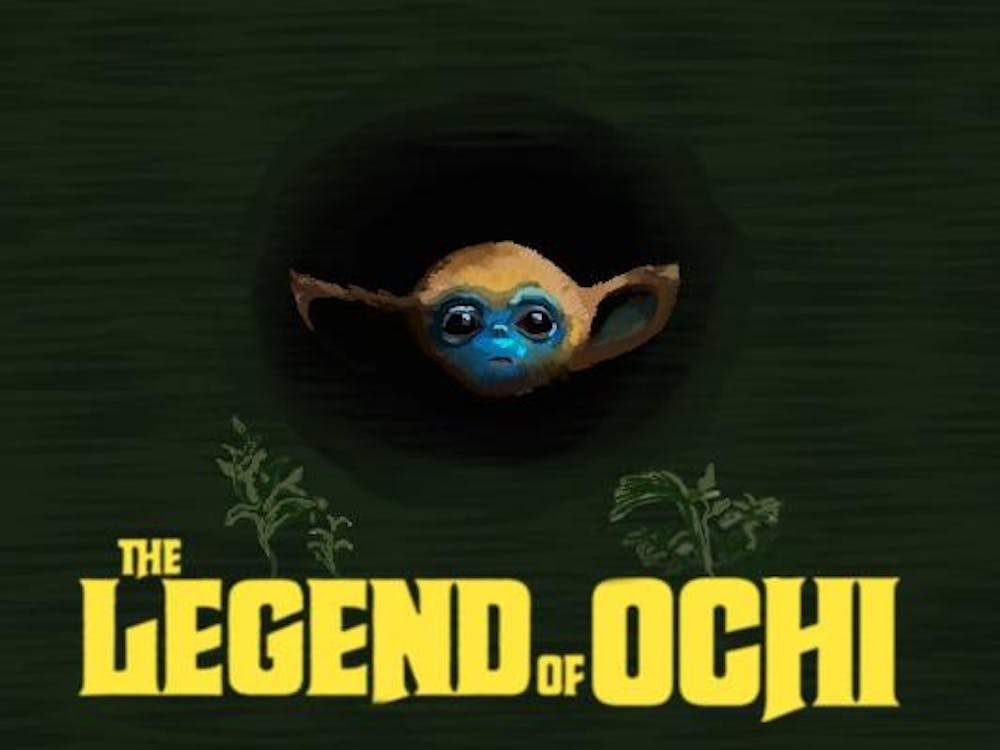Few filmmakers have a style that is as recognizable as Wes Anderson’s. His films are characterized by whip-smart humor, vibrant colors and impossibly detailed frames. Anderson’s style is so established, in fact, that amateur filmmakers have recently taken to imitating it on social media.
Anderson’s latest film is no exception. In his newest release “Asteroid City,” Anderson presents a healthy dose of that signature flair his fans know so well. With the help of a star-studded cast and co-writer Roman Coppola, the filmmaker explores the artistic process and what it means to be a storyteller.
“Asteroid City” opens as a mock black-and-white television special led by a fictional host, played by Bryan Cranston. Cranston introduces the audience to Conrad Earp, the acclaimed playwright of a play called “Asteroid City.”
Audiences are then transported to a colorized reenactment of the play. In it, a newly widowed Augie Steenbeck — played by Jason Schwartzman — takes his three daughters and genius son to Asteroid City, the site of an annual youth science camp and home to a famous fallen asteroid.
After an extraterrestrial being lands in the city and steals the asteroid, the family and the rest of the camp’s inhabitants are quarantined on the premises. As the family meets and interacts with an eclectic array of supporting characters, they build connections, find romance and mourn the loss of their terminally ill mother.
Unsurprisingly, the film is visually gorgeous. Vibrant, complementary hues that color the play scenes are emphasized by the intermittent black-and-white portions. The costumes, set design and props are perfectly curated, resembling a picture-perfect twentieth-century advertisement.
Repeatedly returning to the documentary-style TV show, the audience also learns about how the play came together. They meet Schubert Green — played by Adrien Brody — the director who is going through a divorce at the time of the play’s run. In one scene, Schwartzman’s character has to ask Green for advice on how to approach one of Steenbeck’s lines.
Structurally, “Asteroid City” is perhaps Anderson’s most ambitious film yet. Audiences are transported back and forth between the events of the play and the documentary-style depictions of the play’s creation. While the two intertwining worlds are distinguished by their color and by Cranston’s narration, it can be hard to become immersed in either one.
This is not helped by the fact that the lines between “actors” and “characters” are often blurred. Scarlett Johansson plays Midge Campbell, a difficult actress in the “Asteroid City” universe, as well as Mercedes Ford, a similarly difficult actress who portrays Midge onstage. Characters in the play deliver lines that reference the script itself. In a scene where Steenbeck places his hand on an iron out of nowhere, Steenbeck tells Campbell he only does it because it was in the script.
Intricate connections between characters and the fictional actors who play them can become confusing and tedious. This — coupled with the film’s excessively large cast of minor characters — make it hard to emotionally invest in any of the characters, both inside and outside of the play.
It can be easy to look at the scenes from inside and outside of the play separately, but the film’s heart lies in the relationship between the two. The audience becomes familiar with the “actors” and their dispositions, relationships and motivations, which informs how one views their characters in the play. Through this, Anderson gives the audience profound insight into the life and creative process of actors.
Viewers may leave feeling as though this film was a lot like every other Anderson movie they’ve seen. Stylistically, it is so “Wes Anderson” that it almost feels like a parody of one of his movies, rather than an original. Its kitschy vintage motifs, carefully selected color palette and deadpan delivery from its actors can make the film feel cliche, especially to long-time fans of Anderson.
However, in what is perhaps a diversion from Anderson’s other works, “Asteroid City” is best enjoyed when the focus is on its overall concept rather than its individual elements. Viewing the movie as a conversation between a play and its creation — between a story and how it is told, between art and the people who make it — will prove to be rewarding.
Anderson’s total commitment to the things that typically define his films is perhaps a part of that. For a story that communicates what it means to create, why wouldn’t Anderson indulge in all of the things that define him as a creator?
For those looking for a kitschy, visually appealing two-hour escape, this movie is sure to satisfy. Those looking for something deeper in “Asteroid City” are also likely to find it — if only they know where to look.







